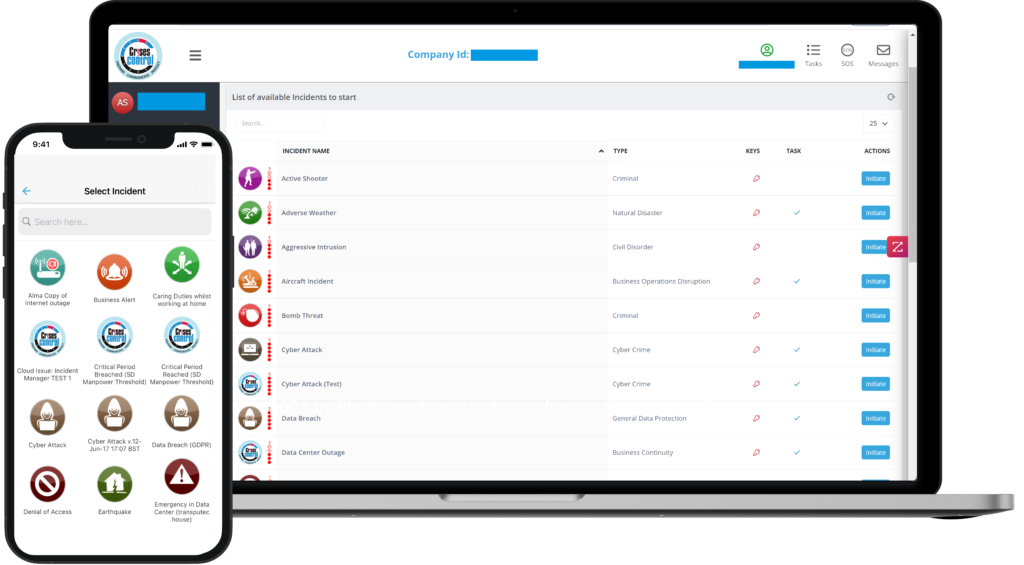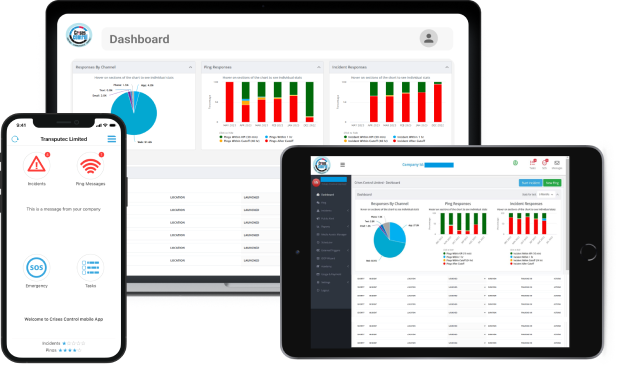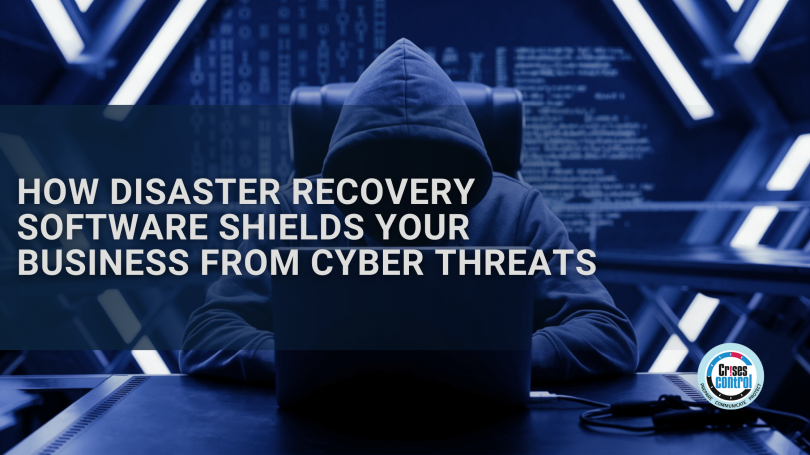Written by Anneri Fourie | Crises Control Executive
Cybersecurity threats are no longer a distant concern, they are an everyday reality. From ransomware attacks and data breaches to system failures and insider threats, businesses face growing cyber risks that can bring operations to a standstill. The consequences are severe, often resulting in financial losses, reputational damage, and regulatory penalties.
For organisations looking to strengthen their resilience, relying solely on cybersecurity defences is not enough. No system is impenetrable, and when an attack occurs, businesses need a way to recover quickly with minimal disruption. Disaster Recovery Software plays a critical role in ensuring that organisations can respond to and recover from cyber incidents effectively.
This blog explores how disaster recovery solutions help businesses stay one step ahead of cyber threats, the risks of operating without a disaster recovery plan, and how Crises Control provides a comprehensive approach to safeguarding operations.
The Growing Threat of Cyber Attacks
Cyber threats are evolving at an alarming rate, with attacks becoming more sophisticated, frequent, and damaging. Many businesses assume they won’t be targeted, but the reality is that cybercriminals target organisations of all sizes. Without a proper disaster recovery strategy, a single cyberattack can cause prolonged downtime, loss of sensitive data, and irreversible financial and reputational harm.
The cost of cybercrime is skyrocketing, and it’s showing no signs of slowing down. According to Cybercrime Magazine, global cybercrime costs are expected to rise from $3 trillion USD recorded in 2015 to $10.5 trillion USD per year by 2025. This isn’t just an IT problem; it’s one of the most significant financial threats businesses face today, with the potential to disrupt economies, hinder innovation, and drain resources on an unprecedented scale. To put it into perspective, cybercrime is expected to be more profitable than the entire global trade of illegal drugs.
With such high stakes, businesses cannot afford to take a reactive approach to cybersecurity. Having a robust disaster recovery plan is essential to mitigating risks and ensuring business continuity in the face of ever-growing cyber threats.
Here are some of the most common cyber threats that businesses face today:
1. Ransomware Attacks
Ransomware is one of the most disruptive cyber threats, encrypting a business’s data and demanding a ransom for its release. Even if a company chooses to pay, there is no guarantee that the data will be restored. Without Disaster Recovery Software, organisations risk losing access to critical systems, leading to prolonged downtime and financial losses.
2. Data Breaches and Insider Threats
A data breach occurs when sensitive information, such as customer details or financial records, falls into the wrong hands. These breaches can be caused by external cyberattacks or insider threats, where employees misuse access privileges. Incident Management Software plays a crucial role in detecting and containing breaches before they escalate.
3. Phishing and Social Engineering Attacks
Phishing emails trick employees into revealing sensitive information, such as login credentials or financial details. Cybercriminals use this method to gain access to business systems and steal valuable data. A Mass Notification Platform can help businesses quickly alert employees to phishing threats and reinforce cybersecurity awareness.
4. Distributed Denial-of-Service (DDoS) Attacks and System Failures
A DDoS attack floods a company’s network with excessive traffic, causing system failures and preventing users from accessing services. Businesses that rely on cloud-based operations can suffer major disruptions if their systems are not prepared for such attacks. Business Continuity Software ensures that organisations have alternative communication channels and recovery strategies in place.
Why Disaster Recovery Software is Essential for Cyber Resilience
Having strong cybersecurity measures in place is important, but what happens when an attack succeeds? Businesses must have a plan to restore operations quickly and efficiently. Disaster Recovery Software is designed to help organisations recover from cyber incidents with minimal disruption, ensuring business continuity and data protection.
Here’s how disaster recovery solutions support cyber resilience:
1. Real-Time Monitoring and Automated Alerts
Early detection is key to preventing cyber incidents from escalating. Modern disaster recovery solutions include real-time monitoring tools that detect unusual activity, such as unauthorised access attempts or system anomalies. Automated alerts notify IT teams immediately, allowing them to take swift action before the threat spreads.
2. Secure Data Backups and Encryption
Regular, automated backups ensure that businesses can restore lost or compromised data quickly. These backups are securely stored in offsite locations with end-to-end encryption, protecting sensitive information from cybercriminals. By having a reliable backup system in place, businesses can avoid paying ransoms or suffering permanent data loss.
3. Rapid Incident Response and Business Continuity
When a cyberattack occurs, businesses must act fast. Incident Management Software allows organisations to implement structured response plans, ensuring that key personnel know their roles and responsibilities. This reduces downtime, minimises financial losses, and helps restore operations as quickly as possible.
4. Regulatory Compliance and Risk Mitigation
Data protection regulations, such as GDPR and ISO 22301, require businesses to have measures in place to safeguard sensitive information. Business Continuity Software helps organisations meet compliance requirements by maintaining secure data handling practices and ensuring documented recovery procedures are in place.
The Risks of Operating Without Disaster Recovery Software
Without a proper disaster recovery strategy, businesses leave themselves vulnerable to severe consequences that can threaten their survival. Some of the biggest risks include:
- Extended Downtime: Cyber incidents can take days or even weeks to resolve, leading to lost revenue and productivity.
- Financial Losses: The cost of ransomware payments, regulatory fines, and business interruptions can be devastating.
- Data Loss and Reputational Damage: Losing critical data can erode customer trust and damage a company’s reputation.
- Legal and Compliance Violations: Failure to protect sensitive information can lead to lawsuits, fines, and loss of business contracts.
A well-structured disaster recovery plan ensures that businesses can continue operating, protect sensitive data, and recover quickly from cyber incidents.
How Crises Control Strengthens Cyber Resilience
Crises Control provides a powerful suite of tools designed to help businesses prepare for, respond to, and recover from cyber threats. Here’s how it supports disaster recovery and business continuity:
- Ping Mass Notification: Instantly alerts IT teams, executives, and employees about cyber incidents, ensuring rapid response.
- Incident Management System: Automates responses to cyberattacks with structured workflows, reducing confusion and downtime.
- Secure Cloud Backups: Protects critical business data with encrypted, real-time backups that can be restored in minutes.
- Task Manager: Assigns and tracks recovery actions to ensure that every step of the cybersecurity response plan is executed correctly.
- Regulatory Compliance Tools: Helps businesses meet legal and industry standards with built-in reporting and audit trails.
- Easy Integration: Seamlessly connects with existing security tools to enhance overall business continuity and cybersecurity strategy.
By leveraging Crises Control, businesses can transition from a reactive disaster recovery approach to a proactive cyber resilience strategy.

Interested in our Incident Management Software?
Customise your Crisis Incident Management Software to meet your specific needs with our flexible tools & stay connected and informed during the crisis and incident management process
How to Strengthen Your Cyber Resilience with Crises Control
1. Assess Your Risk Exposure
The first step in strengthening your cyber resilience is identifying potential vulnerabilities within your IT infrastructure. Start by conducting a thorough risk assessment to pinpoint weak spots, such as outdated software, unpatched systems, and unsecured network points. This allows you to prioritise where to focus your efforts. Once vulnerabilities are identified, define a comprehensive disaster recovery strategy that addresses these risks and outlines the steps to follow in case of a cyberattack. The strategy should include data backup protocols, recovery timelines, and the allocation of resources to ensure a swift recovery. Regular risk assessments will ensure that your business stays proactive in the face of evolving cyber threats.
2. Automate Your Response Plans
When a cyberattack strikes, time is of the essence. Manual responses can cause unnecessary delays and miscommunication, which can lead to greater damage. To speed up response times, automate your disaster recovery processes with Crises Control’s Incident Manager module. This tool allows you to set predefined workflows, so when a threat is detected, your team can respond immediately. Automated alerts notify the right people, ensuring that tasks are assigned quickly and recovery actions are executed without delay. Automation also removes the chance of human error, ensuring that each step is followed as planned and improving your team’s overall efficiency during a crisis.
3. Educate and Train Employees
Regular cybersecurity training and phishing awareness campaigns are key to preventing human error, a leading cause of breaches. Crisis War Gaming exercises can simulate real cyberattacks, helping your team practise responses in real-time. Additionally, the Crises Control Academy provides ongoing training to ensure employees stay up-to-date on the latest cybersecurity practices. Combining these resources will build a resilient team ready to tackle any cyber threat.
4. Monitor and Continuously Improve
Continuous improvement is vital to staying ahead of cyber threats. Use the analytics and reports available through Crises Control to monitor your recovery efforts and identify areas for improvement. Regularly reviewing incident response and recovery data will allow you to refine your strategies and make data-driven decisions for your disaster recovery plan. Implementing an iterative approach ensures that your security measures evolve as new threats emerge, providing long-term protection against increasingly sophisticated cybercriminals. This process of monitoring, analysing, and refining will significantly enhance your organisation’s ability to recover swiftly and reduce the impact of future attacks.
Conclusion
Cyber threats are an unavoidable reality, but their impact can be minimised with the right disaster recovery strategy. Businesses must invest in Disaster Recovery Software that enables them to detect, respond to, and recover from cyber incidents without major disruptions.
Crises Control provides an all-in-one solution for mass notification, incident management, and business continuity, ensuring that organisations can stay ahead of cyber threats and maintain operational resilience.
Don’t wait until a cyberattack disrupts your business, be proactive. Contact Crises Control today and take control of your cyber resilience.
Request a FREE Demo









